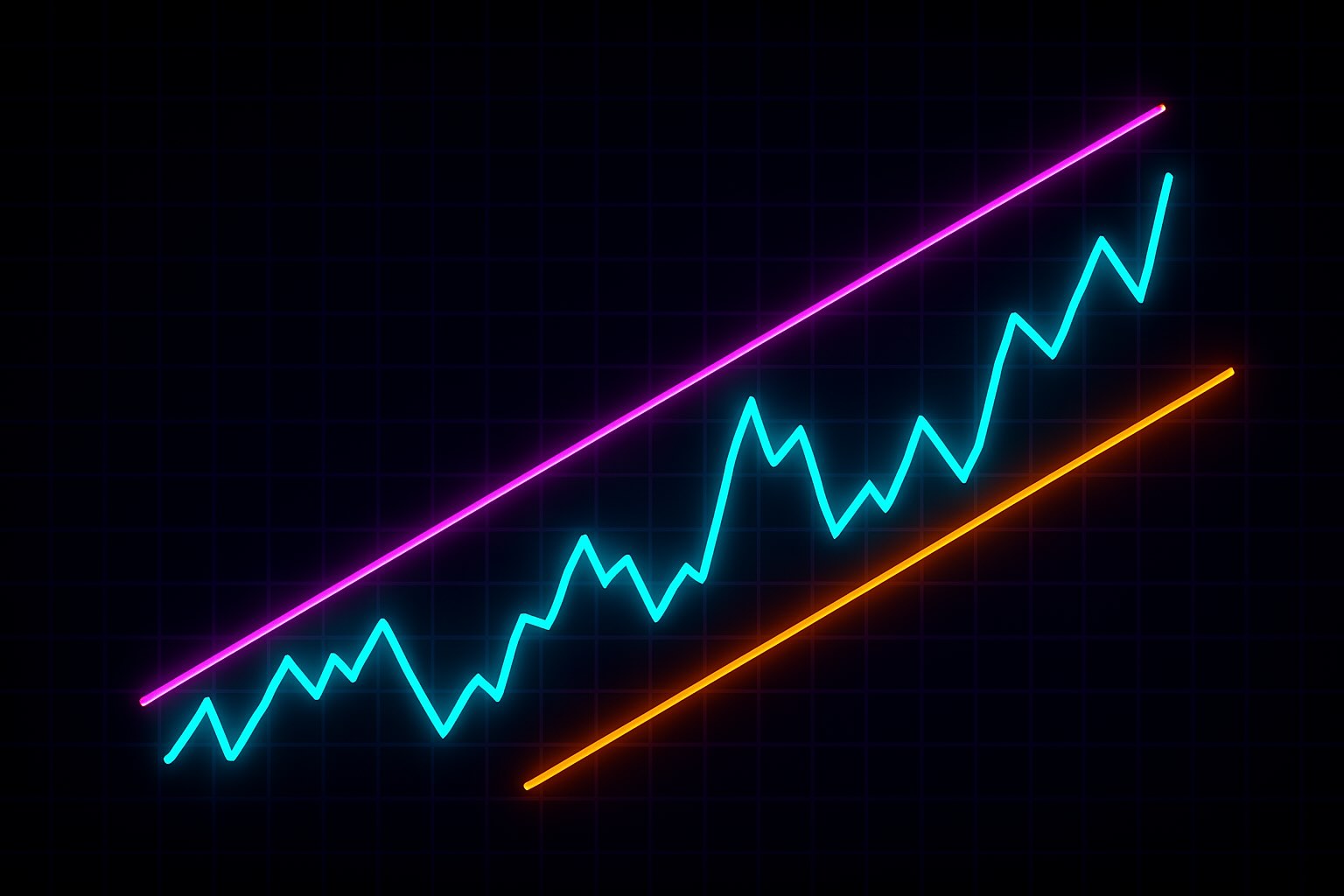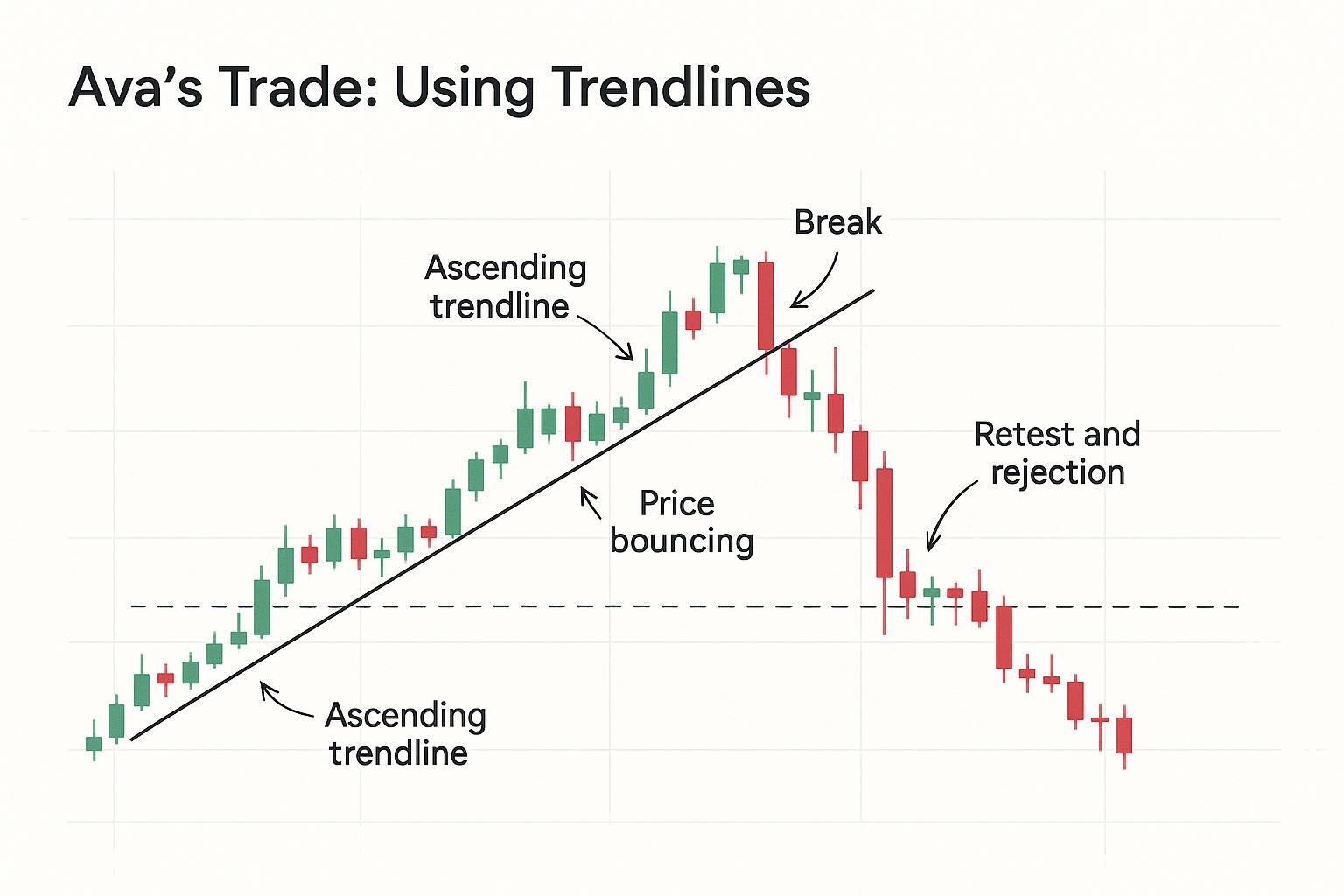
In this lesson, you’ll learn how to draw clean trendlines that actually matter — and how to read what price is telling you when it touches, bounces, or breaks away.
You’ll learn:
This isn’t about guessing the next move.
It’s about seeing when pressure is real — and when it’s fading.
Because structure is what holds the market together.
And trendlines help you see when it’s about to shift.
Let’s begin.
A trendline is one of the first tools most traders learn — and one of the most overlooked in its depth.
It’s not just a diagonal line.
A trendline reflects how price reacts to pressure over time. It shows where buyers consistently defend ground, or where sellers continue to push back. When drawn with care and read with context, it reveals where momentum is holding — and where it’s starting to slip.
Trendlines don’t predict where price will go.
They show you how pressure is behaving — until it changes.
That’s what makes them useful.
Think of trendlines as maps of pressure. Each type tells a different story about what the market is trying to do — and how well it’s doing it.
These are not rules — they’re signals of behavior. And the real lesson isn’t in drawing the line. It’s in reading what price does around it.
You draw a trendline after a structure begins to form — not during random motion.
Use it when:
A trendline is most useful when combined with other tools:
It’s not just “touch the line = enter.”
It’s "read the behavior = decide."
Let’s follow Ava — a structured swing trader.
Solana (SOL) has been climbing from $18 to $26 in a steady rhythm. Price isn’t exploding — it’s building. Higher lows form at $18.50, $20.80, and $22.60.
Each time price pulls back, buyers return sooner — defending higher ground.
Ava connects these three reaction lows:
Her ascending trendline is now active.
But she doesn’t rush in.
She asks herself:
“Is this trend still being respected — or are we approaching exhaustion?”
She waits for a pullback.
Price retraces toward the trendline again — this time at $23.
She watches closely:
That’s confluence. Ava sees the market acknowledging the level — not randomly, but with pressure.
She waits for confirmation — a bullish engulfing candle closes above the line.
She enters the trade.
This is not about drawing a line and buying the bounce.
This is observing reaction, confirming intent, and acting on structure.
Two weeks later, price returns to the trendline — but this time, Ava notices a difference.
Ava doesn’t react. She observes.
Then a sharp bearish candle closes below the trendline — with force.
She doesn’t trade immediately. She watches for confirmation.
Now structure has changed.
Ava begins planning a short trade — using the broken trendline as resistance, not support.
The same tool — used in both directions.
Not because the line is magic.
Because price behavior changed around it.
The line is not the signal. The reaction around the line is.
Ask:
If the reaction is strong, and confluence builds — it might be a continuation.
If the reaction is weak, or price slices through with no hesitation — that’s just as important. It’s not failure. It’s information.

Trendlines are tools for identifying structure — not for predicting outcomes.
They help you see how price has responded to pressure in the past, and where it might do so again. When used well, they support disciplined trading by helping you:
But the trendline itself isn’t a signal.
What matters is how price behaves around it.
At Kodex, we draw trendlines to observe behavior — not to forecast direction. We respond to what the market is showing us, not what we hope will happen.
Use the trendline to stay focused.
Use confirmation to decide if it’s valid.
And if the structure breaks — be ready to adjust.